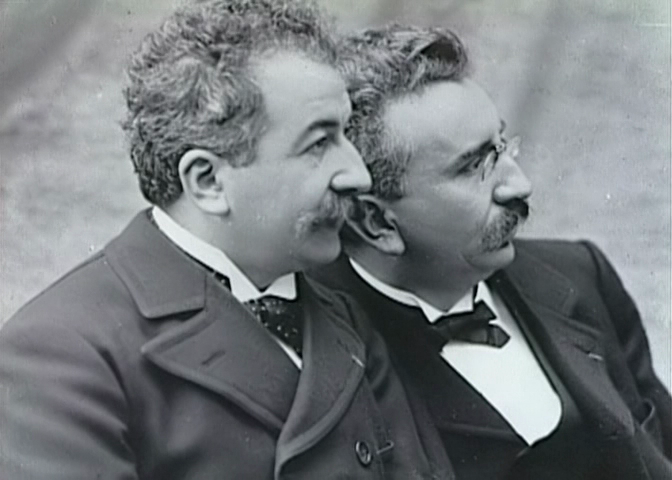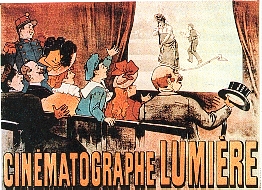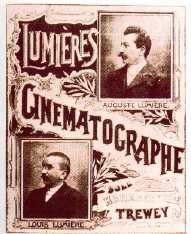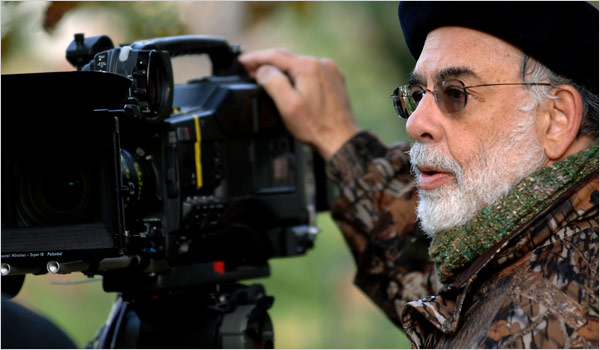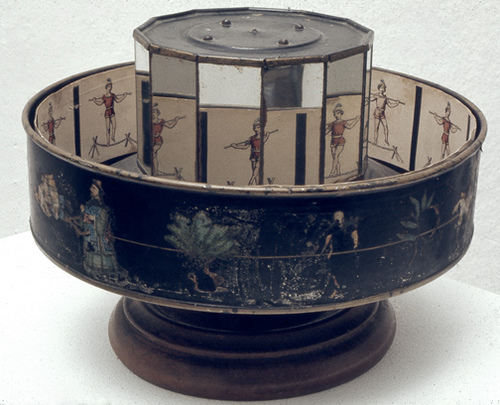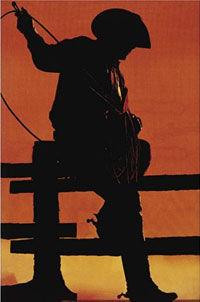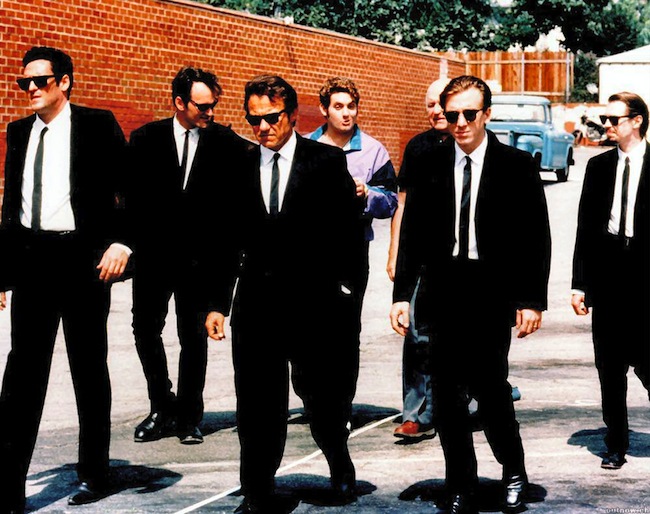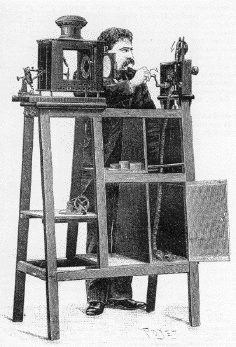 The Lumière brothers, Auguste Marie Louis Nicolas (19 October 1862, Besançon, France – 10 April 1954, Lyon) and Louis Jean (5 October 1864, Besançon, France – 6 June 1948, Bandol, were among the earliest filmmakers. (Appropriately, “lumière” translates as “light” in English.)
The Lumière brothers, Auguste Marie Louis Nicolas (19 October 1862, Besançon, France – 10 April 1954, Lyon) and Louis Jean (5 October 1864, Besançon, France – 6 June 1948, Bandol, were among the earliest filmmakers. (Appropriately, “lumière” translates as “light” in English.)
Antoine Lumière and his two sons owned a photographic materials factory in Lyons, France. After seeing an Edison kinetoscope in Paris in the summer of 1894, Antoine suggested to Louis and Auguste that they work on developing a motion picture system.
The successful machine was patented in February 1895, in the name of both brothers.
The Cinématographe was a combined camera, printer and projector. The film was moved intermittently by a pair of pins, which entered the perforations on either side of the film, then moved down – pulling the film with them. They shot several test films early in 1895. After developing the negative, it was run through the machine together with a roll of unexposed film, to produce the projection print. For projection, the machine was set up on a wooden stand, with an electric arc lamp, made by lantern specialist Molteni.
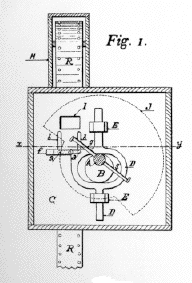 The first presentation was to the Society for the Promotion of Industry, on 22nd March. Only one film was shown, Workers leaving the Lumière factory, shot by Louis. It was projected, almost as an afterthought, following their lecture on advances in experimental colour photography.
The first presentation was to the Society for the Promotion of Industry, on 22nd March. Only one film was shown, Workers leaving the Lumière factory, shot by Louis. It was projected, almost as an afterthought, following their lecture on advances in experimental colour photography.
The filmshow caused considerable excitement. Several other presentations to scientific societies followed during the year, as they built up their film programme. Films were taken at, and shown to, a Congress of Photographic Societies during the summer.
Soon the Lumières were planning their first show to the paying public, on 28th December at the Grand Café, Boulevard des Capucines, Paris.There was a preview during the afternoon; those invited included future fantasy filmmaker Georges Méliès. This show comprised ten films, each just under one minute in running time.
They included Baby’s Breakfast, featuring Auguste’s daughter Andree; and the now-famous Arroseur et arrosée; a trick with a water hose drenching the Lumières’ gardener. Word of the novel show soon spread, and crowds formed on the Paris boulevard.
Other films soon followed, including Train arriving at La Ciotat station, featuring several members of the Lumière family. From 1896 the Lumières trained several operators to travel the world, filming and giving filmshows.
Their friend Felicien Trewey, a “shadowgraphist” well-known on the London stage, arranged to bring their invention to London.
The Cinématographe show at the Regent Street Polytechnic on 20 February 1896 was Britain’s first public filmshow. Soon, their films were showing at the prestigious Empire Theatre in Leicester Square, where they was very popular.
Within a few years the brothers’ attention was diverted elswhere – Louis returned to a previous interest, colour photography, and Auguste to his medical research. Over 1000 short films made by the Lumières and their operators have survived and are now restored.

